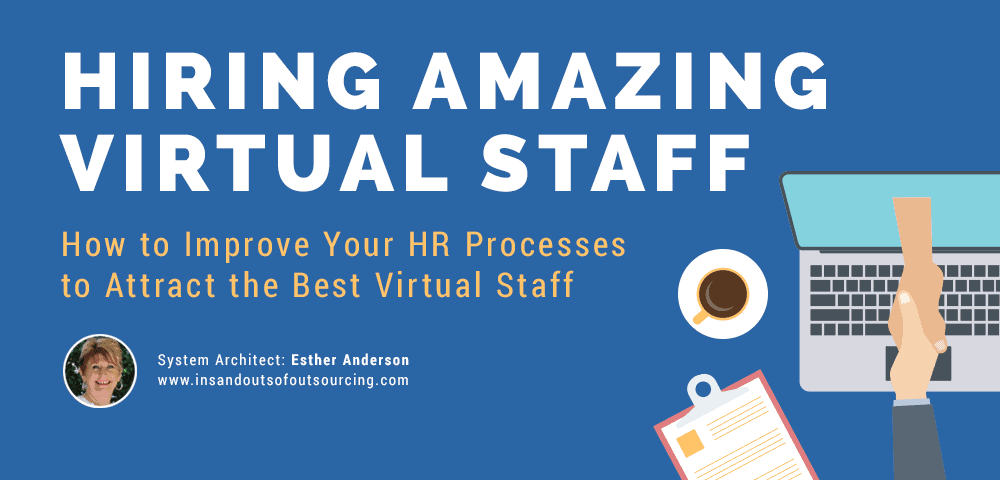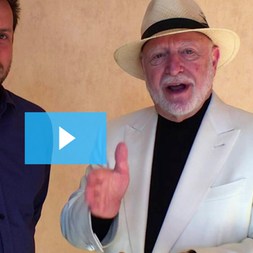
System Architect | Esther Anderson : insandoutsofoutsourcing.com
Are you one of those start-up or small business owners who are bogged down by too many emails or data entry tasks to do everyday? Tired of constantly updating your own company website, Instagram, Facebook and other social media pages? Having a difficult time juggling important client meetings with your endless to-do lists?
Outsourcing your most time-consuming, repetitive business processes may be the answer to your problem!
You’ve likely heard about outsourcing countless of times from within your business circles. After all, many business owners and entrepreneurs swear by it as the single most significant strategic decision they’ve ever made for their companies. Hiring virtual staff is not only financially cost-effective it also allows you to focus your energy on more important things like growing your business and achieving your goals.
The question is: how do you ensure you hire virtual staff that best fit your business needs?
Global outsourcing expert Esther Anderson believes that with the proper system and processes in place, you will be able to attract the right candidates and create a team of professional virtual staff who can help run, support and grow your business. Esther shares her proven effective system to improve your HR processes, making it easier to employ the right people for your company. Here’s how!
How to Attract the Best Virtual Staff
Step 1: Define what processes you need your staff to carry out
- Determine whether you need an all-rounder or a specialist on a specific task.
- Identify how many hours per week in each field you need them in total.
- List the main field for your staff: VA, Audio/Video, Content, SEO, Graphic, Web Design, Web Dev.
- List how many hours per task you need your staff to work per week.
- Check other tasks you need your staff to perform.
See Main Tasks You Require and Hours document.
Step 2: Write an effective job description for your ad
- Format your ad to post on job boards such as Fiverr and Upwork.
- Formulate the ad to attract the high calibre of candidates you want.
- Ask specific questions to qualify candidates.
Writing job description tips:
- Use an appealing subject line for your job ad and include keywords
- Start off with a general description of what you expect from your staff
- List all qualifications for the post
- Then follow with responsibilities; make sure these tasks are those you listed in Step 1.
- You may conclude with a general description of how the hiring process will be, and how urgent the position needs to be filled.
- You may also put the compensation and benefits, but we suggest discussing details with successful applicants only.
See examples Sample document and Template document.
Step 3: Manage your job ads
- Shortlist possible candidates. Use answers to qualifying questions to eliminate certain applications.
- Filter and sort your applicants once every day
- If you are using job boards, read the applicant’s profile information and if you think they are fit for the post, message them to schedule an Interview
- If you are using other means to advertise and you get contacted via email, sort and start with the applicants with complete information and documents
- You may want to keep the profiles of other applicants if they don’t make it to the cut, you might need them in the future
Step 4: Schedule for interview
- Depending on how many applications you receive each day, contact and schedule 3 candidates at a time.
- If you receive only one or two, and they don’t seem to fit the position, review your job ad and make sure you have described the position clearly.
- Do not settle for ‘this will do’ or ‘I think she can’ candidates. Spare your time for people who have the skills and of course, the experience.
- Make first contact – send them an email
- Do a video interview so that you can see their reaction
- Send them a list of questions beforehand (see example template Applicant Profile document and Questionnaire document)
Step 5: Conduct the interview
- Ask the right questions (see example template Interview document). Divide questions into skills and work circumstances and availability
- You may send the candidates a list of possible questions you will ask
- Prepare your questionnaire and make sure you sound natural and calm
- Break the ice and do not go straight ahead to bombarding them with questions: connect with them first
- Have other interested parties like HR manager on call
⟶ Make notes, especially the important info from your applicant – good points and bad points
- At the end of the interview, thank the applicant and give him/her an idea of how many days it will take to deliberate the results
Step 6: Decide who gets hired
- Identify the factors to consider in deciding who to hire
- Review the applicants’ CVs and interview notes
- Pick the one you think will be best for the position, and will have no problems working with your current team (if any)
- Decide whether you want someone with passion to learn, along with some skills, or the experienced and skilled: both are a good choice
- Notify the applicants: successful and unsuccessful: both should receive an email informing the result of their application
See example Successful Applicant Email Template document and Unsuccessful Applicant Email Template document.
Step 7: Test week and probation period
- The first week is a trial week for your staff (you can also have a probation period of 3 months). They will get involved in the process but it will be a test. If you are pleased with their performance, go to step 8. IF not, go back to step 4. This can be at a reduced rate if appropriate. You can even have more than one employee on a trial
- On the first day, set expectations and meet with your new staff member
- Ask them for their expectations and answer any questions they have
- Give tasks that you will normally require from their position
- Give feedback on what you like and dislike with their work
- Take note of the work ethics and the ability to perform tasks independently
- Your new staff member should be able to adapt mid-week or towards the end of the week
Step 8: Onboarding the new staff member
- Properly introduce the staff to the team, any clients they will be working with, and to your processes and tools.
- Follow onboarding checklist
□ Employee Information Sheet (all important information of the staff)
□ Accounts Department (information on bank, PayPal, how they get paid and rates)
□ New Employee Orientation/ Meeting
□ Employment Agreement – see example Employment Agreement document
□ Confidentiality Agreement – see example Confidentiality document
□ Email accounts (email username and passwords)
□ List of important contacts (email database, clients, team)
□ Tools Login
□ Social Media access (groups, pages)
Excited about hiring your very first virtual assistant?
Like with any new venture, engaging virtual staff is a very important decision and investment you can make. You wouldn’t want to waste your precious time and money making the wrong decisions. So it is important that you arm yourself with the right processes and tools to help you attract and select the right people for your business.
Luckily you need not have to go through this blindfolded. There are hundreds of virtual staff agencies out there with the expertise and experience that can help you.
But if budget is an issue, there’s no reason why you can’t DIY! Simply follow this 8-step process using the templates and tools provided and you’ll soon be on your way to hiring the virtual assistant you’ve been waiting for.
System Architect – Esther Anderson

Esther and her team developed their systems so well, they were able to open up a virtual staff agency where they provide trained staff to clients in different fields. The difference is that the staff are always employed by them and they provide a guarantee on their work standards. The bonus is that they unbox the systems and processes that clients need when first setting up a business.












